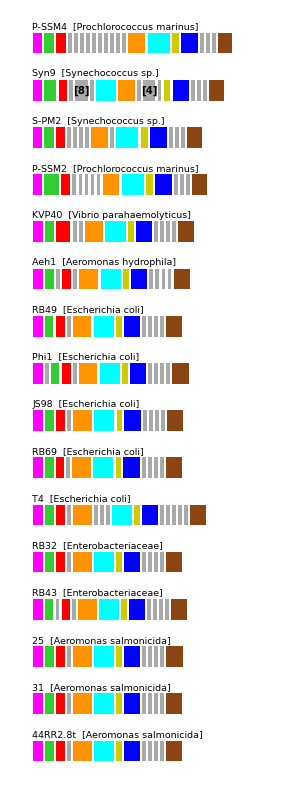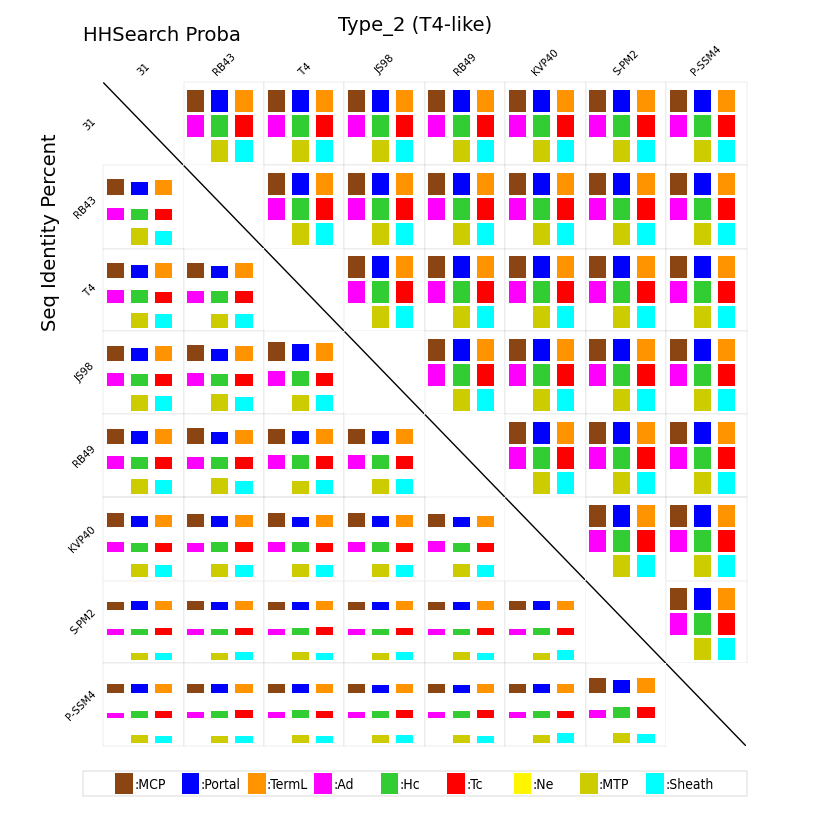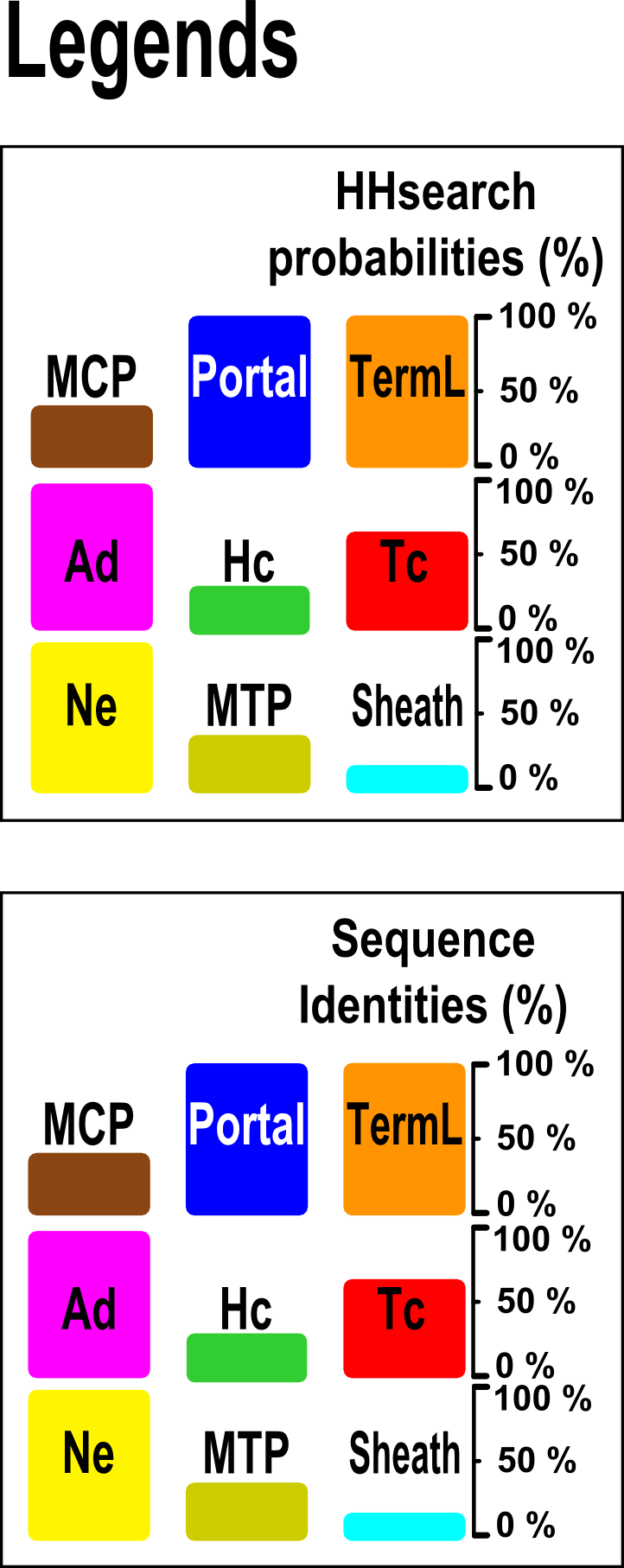The neck is the head-to-tail interface which is formed by the connector and the tail-completion proteins. The connector is formed by the portal and the head-completion proteins. (Click here for a general description of the assembly pathway of tailed bacteriophages)
adopts the structural organization of the Myoviridae phage T4 neck. It is formed by a portal protein, an Ad2 (Adaptor of type 2), a Hc2 (Head-closure of type 2) and a Tc2 (Tail-completion of type 2) proteins. Type 2 neck gathers myophages with large genome sizes (151 to 381 genes). In this neck organization, all the phages contain the triplet Ad2-Hc2-Tc2 with a very conserved gene order that follows the [Ad2-Hc2-x(0-1)-Tc2-x(1-5)-TermL-x(0-3)-Sheath-MTP-Portal-x(3-5)-MCP] scheme. Note the case of P-SSM4 which displays an insertion of 10 genes between the Tc2 and TermL genes and Syn9 which presents an inversion between the Sheath and the TermL gene positions.


For more clarity, numbers between square brackets indicate the number of unannotated genes.
For every pair of phages sharing a given neck type and for all the components of the capsid-neck-tail module they share (out of the nine possible components described below), we calculated the corresponding HHsearch probability and sequence identity scores. The resulting scores are illustrated with colored squares whose size is proportional to the considered score (similarity scores lie in the bottom half matrix while HHsearch probabilities lie in the top half matrix). See legend below for square colors and for identity or HHsearch probability scores.

